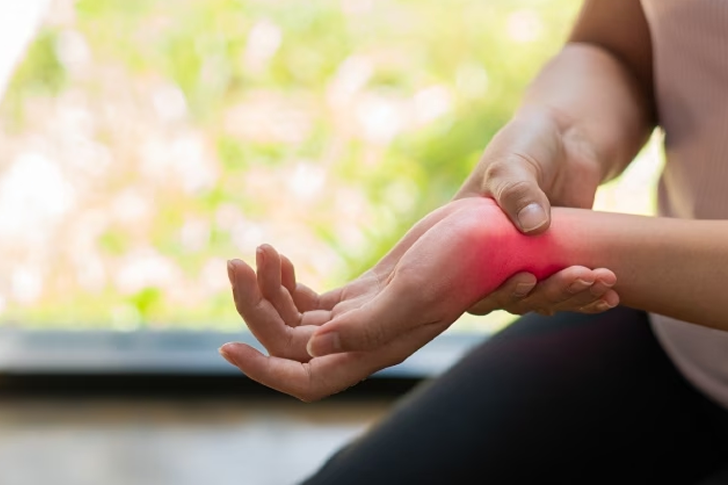Goodbye to Arthritis: A Comprehensive Guide
Arthritis is a common condition that affects millions of people worldwide. It involves inflammation of the joints, leading to pain, stiffness, and reduced mobility. While there is no cure for arthritis, there are many ways to manage the symptoms and improve quality of life. This guide provides an in-depth look at the types of arthritis, treatments, lifestyle changes, and answers to common questions.

Types of Arthritis
1. Osteoarthritis
- Description: The most common form of arthritis, caused by the wear and tear of joint cartilage.
- Symptoms: Joint pain, stiffness, swelling, and reduced range of motion.
- Commonly Affected Areas: Knees, hips, hands, and spine.
2. Rheumatoid Arthritis
- Description: An autoimmune disorder where the immune system attacks the joints.
- Symptoms: Joint pain, swelling, stiffness, and fatigue.
- Commonly Affected Areas: Hands, wrists, knees, and feet.
3. Psoriatic Arthritis
- Description: A form of arthritis that affects some people with psoriasis.
- Symptoms: Joint pain, swelling, and skin rashes.
- Commonly Affected Areas: Fingers, toes, and lower back.
4. Gout
- Description: A type of arthritis caused by the buildup of uric acid crystals in the joints.
- Symptoms: Sudden and severe joint pain, redness, and swelling.
- Commonly Affected Areas: Big toe, knees, and ankles.
Treatment Options
1. Medications
- Nonsteroidal Anti-Inflammatory Drugs (NSAIDs): Reduce inflammation and pain.
- Corticosteroids: Reduce inflammation and suppress the immune system.
- Disease-Modifying Antirheumatic Drugs (DMARDs): Slow the progression of rheumatoid arthritis.
- Biologics: Target specific parts of the immune system to reduce inflammation.
2. Physical Therapy
- Exercise: Strengthens muscles around the joints and improves flexibility.
- Occupational Therapy: Helps with daily activities and joint protection techniques.
- Manual Therapy: Hands-on techniques to improve joint function.
3. Surgical Treatments
- Joint Replacement: Replaces damaged joints with artificial ones.
- Arthroscopy: Minimally invasive surgery to repair joint damage.
- Osteotomy: Reshapes bones to relieve pressure on the joint.
Lifestyle Changes
1. Diet and Nutrition
- Anti-Inflammatory Foods: Include omega-3 fatty acids, fruits, vegetables, and whole grains.
- Weight Management: Maintain a healthy weight to reduce stress on joints.
- Hydration: Drink plenty of water to keep joints lubricated.
2. Exercise and Physical Activity
- Low-Impact Activities: Swimming, cycling, and walking are gentle on the joints.
- Strength Training: Builds muscle to support and protect joints.
- Flexibility Exercises: Stretching and yoga improve joint mobility.
3. Alternative Therapies
- Acupuncture: May help reduce pain and improve joint function.
- Massage Therapy: Relieves muscle tension and improves circulation.
- Supplements: Glucosamine, chondroitin, and turmeric may provide relief.
Common Questions (Q&A)
Q: Can arthritis be cured? A: There is no cure for arthritis, but many treatments can help manage symptoms and improve quality of life.
Q: What is the best diet for arthritis? A: An anti-inflammatory diet rich in omega-3 fatty acids, fruits, vegetables, and whole grains can help reduce inflammation and pain.
Q: How often should I exercise if I have arthritis? A: Aim for at least 30 minutes of low-impact exercise most days of the week. Consult your doctor or physical therapist for personalized recommendations.
Q: Are there any natural remedies for arthritis? A: Yes, natural remedies such as acupuncture, massage therapy, and certain supplements may provide relief. Always consult with a healthcare provider before trying new treatments.
Q: How can I manage arthritis pain without medication? A: Lifestyle changes such as regular exercise, a healthy diet, weight management, and alternative therapies can help manage pain without relying solely on medication.
Comparative Chart of Treatment Options
| Treatment Option | Benefits | Considerations |
|---|---|---|
| Medications | Quick relief of pain and inflammation | Possible side effects, long-term use concerns |
| Physical Therapy | Improves joint function and strength | Requires regular sessions and commitment |
| Surgical Treatments | Can provide long-term relief | Invasive, risk of complications |
| Lifestyle Changes | Improves overall health and joint function | Requires consistency and lifestyle adjustments |
| Alternative Therapies | May provide additional relief | Varies in effectiveness, consult doctor |
Conclusion
Managing arthritis involves a multifaceted approach that includes medical treatment, physical therapy, lifestyle changes, and alternative therapies. By understanding the various types of arthritis and available treatments, you can work with your healthcare provider to develop a comprehensive plan to manage your symptoms and improve your quality of life.
Sources







Recent Comments